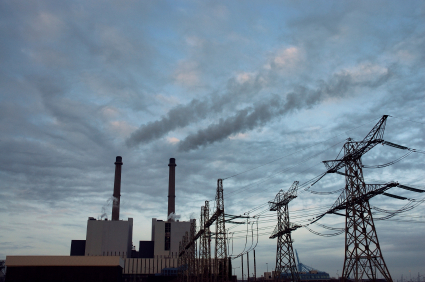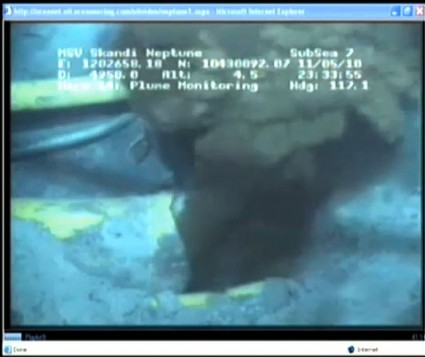Cross-posted from the Wonk Room.
 As federal authorities struggle to deal with the BP oil disaster in the Gulf of Mexico, it is probably useful to remember that power companies continue poisoning water bodies throughout the nation. The power industry’s successful campaign to sidestep toxic pollution controls has left a legacy of poisoned rivers and lakes. As ugly as this legacy seems, the power industry appears to be maneuvering once again for further delays, trying to use pending Senate climate legislation as an escape hatch.
As federal authorities struggle to deal with the BP oil disaster in the Gulf of Mexico, it is probably useful to remember that power companies continue poisoning water bodies throughout the nation. The power industry’s successful campaign to sidestep toxic pollution controls has left a legacy of poisoned rivers and lakes. As ugly as this legacy seems, the power industry appears to be maneuvering once again for further delays, trying to use pending Senate climate legislation as an escape hatch.
A draft version of the Kerry-Lieberman American Power Act would create a new task force to examine pending EPA air pollution rules for the power industry, and make recommendations about weakening or eliminating public health safeguards in the name of electricity generation reliability. The American Lung Association has warned that this provision could undermine EPA’s efforts to tackle toxic emissions from power plants. That concern was echoed by NRDC, long a leader in the effort to clean up toxic mercury:
Specifically, the draft bill establishes a highly objectionable task force to examine utility industry calls for exemptions from federal environmental laws and regulations that utilities allege are impeding power plant retirements or transitions to cleaner energy. The provision’s language is suffused with utility industry complaints and rhetoric and pleas for payment, making clear the design for a biased exercise. Polluter lobbyists deliver a deregulatory wish list to Congress and federal agencies. The agencies then are authorized by this bill to propose regulatory changes to carry out those wishes.
A spokesman for the utility industry said it welcomed the provision.
The language of the American Power Act is the latest in a long history of compromises. When Congress passed sweeping and generally positive revisions to the Clean Air Act in 1990, the legislation compromised on toxic air pollution. Frustrated with the generally slow pace in cleaning up hazardous air emissions, Congress ordered the U.S. Environmental Protection Agency to take action to clean up industrial sources of mercury and other hazardous pollutants. But, in one fateful last minute compromise, Congress caved to pressure and gave a special deal to the powerful electric power industry: EPA was told it could not set toxic air pollution standards for electric power plants until it had completed a special study of the industry.
Law makers in 1990 probably could not have imagined that two long decades later, mercury and other toxic emissions from power plants remain uncontrolled — even though the power industry is the biggest domestic source of toxic mercury air pollution in the nation, which has contaminated all 50 states.
This saga of delay has several low points worth recalling:
1995: EPA missed its initial study deadline, but agreed in a legal settlement with the Natural Resources Defense Council to complete work on the project.
2000: Despite massive lobbying by the coal-burning power industry, EPA found that “mercury emissions from electric utility steam generating units are considered a threat to public health and the environment,” and decided to require maximum achievable controls at all power plants by 2008. But industry continued its lobbying campaign — both in Congress and at the EPA. The Bush administration’s Orwellian “Clear Skies Initiative” would have eliminated the mercury control requirement and substituted a weaker cap-and-trade control strategy. This may have reduced mercury levels but could have perpetuated mercury “hot spots.”
2005: After Congress rejected the “Clear Skies” plan, the Bush administration attempted to rescind tough toxic air pollution control requirements for the power industry and substitute a weak cap-and-trade system that would not have required any mercury-specific pollution controls before 2018. Because of delays inherent in such a trading system, the plan would have required approximately a 70 percent reduction in mercury emissions — but not until the year 2026! A federal court threw out the Bush plan as illegal, and ordered EPA to go back and follow the law.
EPA is currently under a legal agreement to propose toxic pollution requirements for the power industry by March 2011 and to set final standards by November 2011. These standards are critical. As the EPA notes, “Coal-burning power plants are the largest human-caused source of mercury emissions to the air in the United States, accounting for over 50 percent of all domestic human-caused mercury emissions.”
As the Environmental Integrity Project recently reported, overall mercury emissions from power plants were virtually the same in 2008 as in 2000 — and more than half of the dirtiest power plants actually increased their mercury emissions from 2007 to 2008!
It’s a no-brainer that we need to reduce global warming from power plants, and the American Power Act would be a step in that direction. But it’s critical to reduce mercury and other toxics as well. Two decades of delay is far too long.




